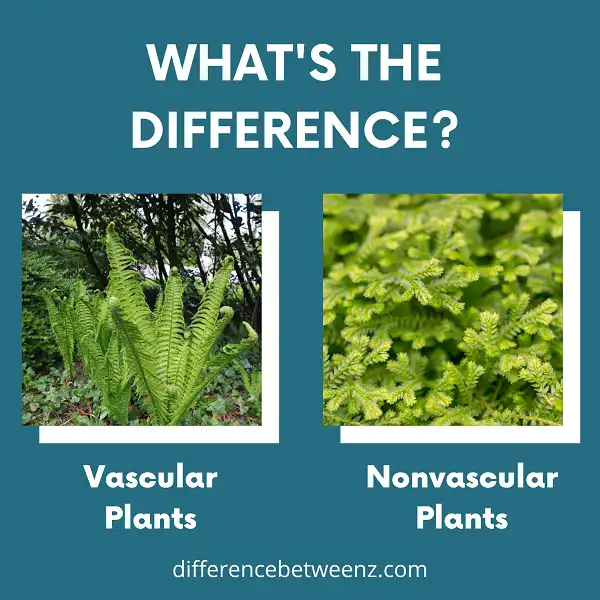All plants are either vascular or nonvascular. Vascular plants have specialized tissues that carry water and nutrients throughout the plant, while nonvascular plants do not. This is why vascular plants are typically taller and larger than nonvascular plants. Nonvascular plants can still survive and grow, but they are limited to what they can obtain from their environment. There are many different types of both vascular and nonvascular plants, so let’s take a closer look at each one!
What are Vascular Plants?
Vascular plants are a type of plant that have specialized tissues for conducting water and nutrients. The three main types of vascular plants are mosses, ferns, and seed plants. Vascular plants are distinguished from other plants by the presence of certain key features, such as lignin, xylem, and phloem.
Lignin is a tough fibrous material that helps to support the plant against gravity. The xylem is a network of hollow tubes that transport water and minerals from the roots to the leaves. A phloem is a series of living cells that carry food molecules from the leaves to the rest of the plant.
Vascular plants are adapted to live in a wide range of habitats, from deserts to rainforests. They play an important role in the global ecosystem, providing food and shelter for many animals.
What are Nonvascular Plants?
Nonvascular plants are a type of plant that does not have a vascular system. This means that they do not have veins or xylem tissue to transport water and nutrients throughout their bodies. Nonvascular plants include mosses, liverworts, and hornworts.
- Unlike vascular plants, nonvascular plants cannot grow very tall. This is because they cannot move water and nutrients up their stems against gravity. Nonvascular plants typically have thin, green leaves. They also often grow in damp environments, such as near waterways or in shady areas.
- Nonvascular plants reproduce using spores instead of seeds. When spores land on a moist surface, they can begin to grow into new plants. Nonvascular plants are an important part of many ecosystems.
- They help to provide habitats for small animals and break down dead organic matter. Nonvascular plants are also one of the earliest groups of plants to have evolved on Earth.
Difference between Vascular and Nonvascular Plants
Vascular and nonvascular plants are two types of plants that differ in their structure and function.
- Vascular plants have a specialized system of tubes that transport water and nutrients throughout the plant.
- Nonvascular plants, on the other hand, do not have this specialized system. Instead, they rely on diffusion to transport water and nutrients.
- Vascular plants are typically taller and have a more complex structure than nonvascular plants. They also tend to live in habitats with more moisture.
- Nonvascular plants, on the other hand, are typically smaller and have a simpler structure. They can be found in a variety of habitats, including both wet and dry environments.
Despite their differences, both vascular and nonvascular plants play an important role in the ecosystem.
Conclusion
Nonvascular plants are simpler than vascular plants and can be found in many different environments. Vascular plants are more complex, have specialized tissues for conducting water and nutrients, and can be found in a variety of habitats. Knowing the difference between these two types of plants is important if you want to identify local flora or understand plant biology.


